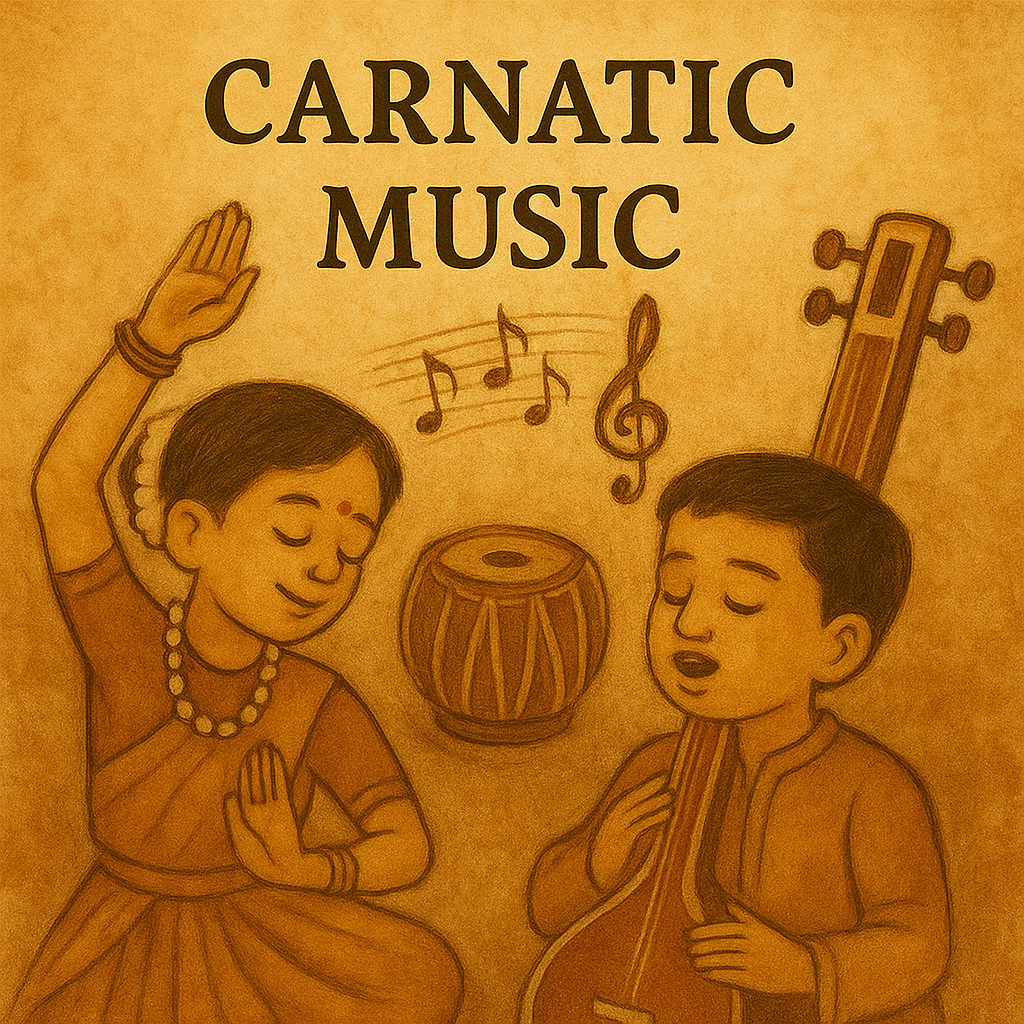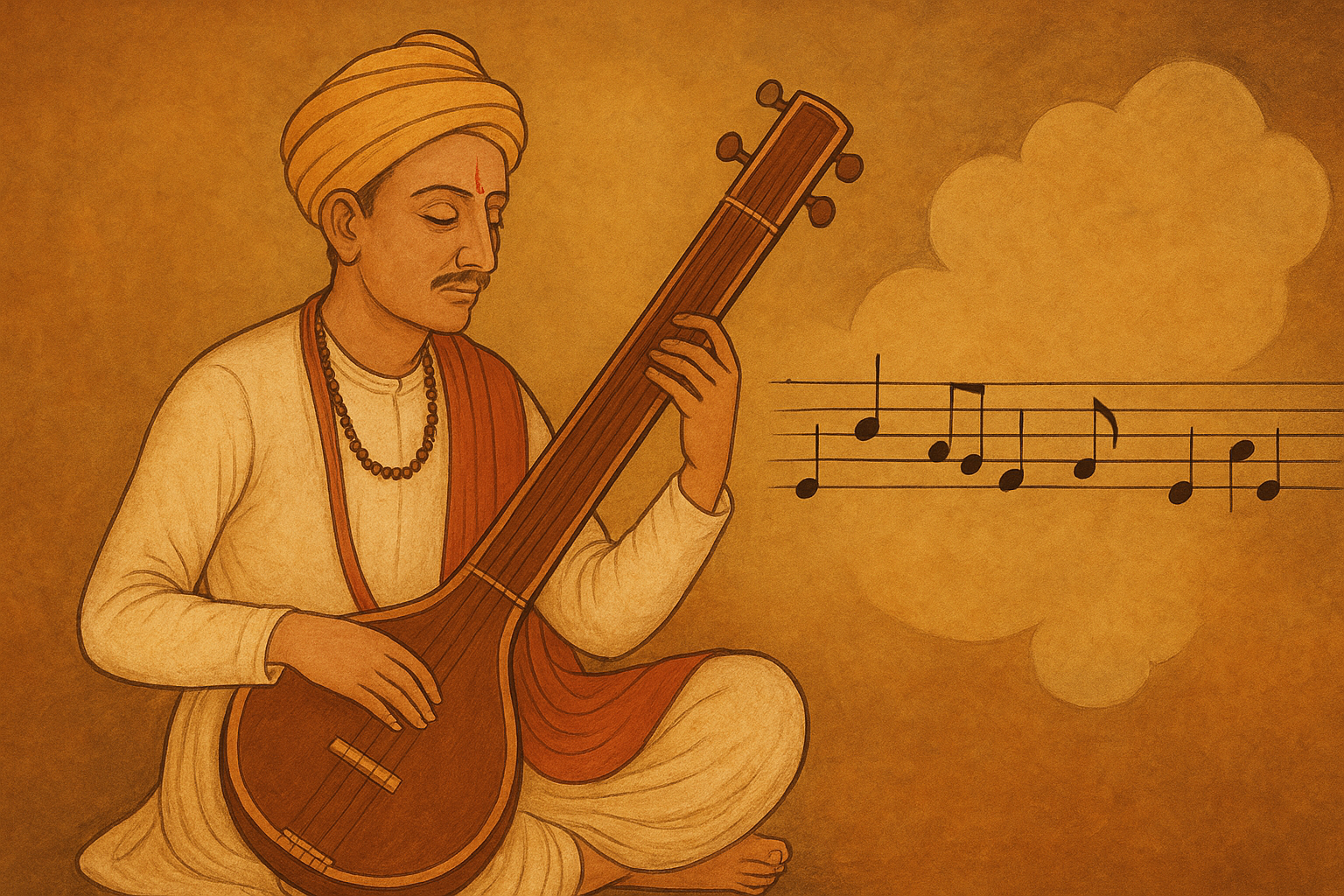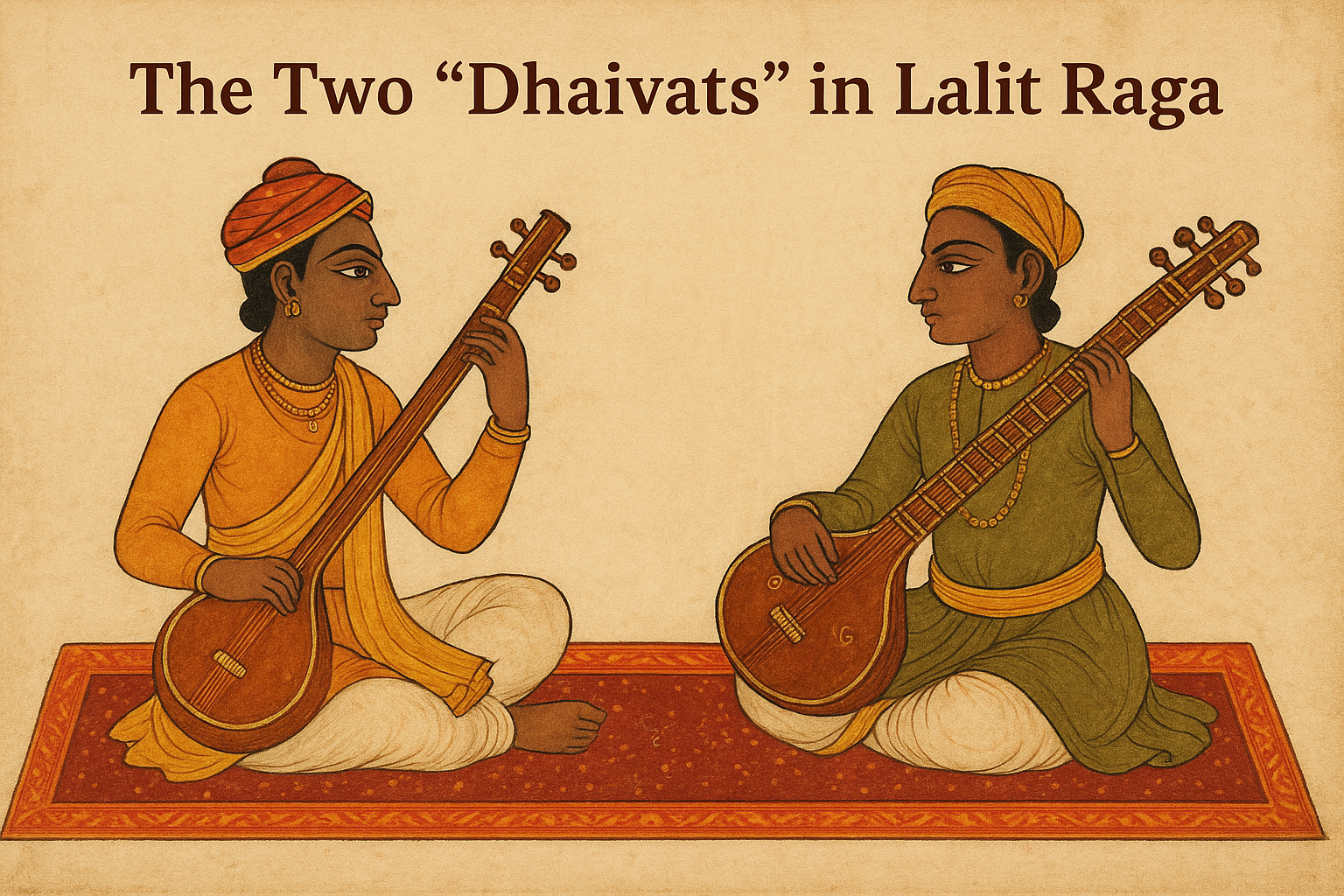Carnatic music, the classical musical tradition of South India, is not just a system of ragas and talas—it is a living, breathing art form with a rich variety of compositional forms. Each form reveals a different dimension of the music’s emotional, spiritual, and technical depth.
In this blog post, we explore some of the most important geet-prakars (song types) in Carnatic music.
Padam – The Soul of Expression
Padams are deeply emotive compositions often rendered in a slow and serious tempo, similar to Dhrupad in Hindustani music. They typically include: Pallavi, Anupallavi, and Charanam. Singers may begin from any of these sections, and the style allows for expansive improvisation. Ragas such as Todi, Bhairavi, and Kambhoji are common choices. Historically rooted in Jayadeva’s Gita Govinda, Padams transitioned into South Indian music from the 15th century. Composers like Purandaradasa, Kshetrayya, and even the Maratha ruler Shahaji have contributed timeless Padams in Telugu, Sanskrit, and Marathi. These compositions often depict the spiritual union of the soul (jivatma) with the divine (paramatma) and are widely performed in Bharatanatyam for their expressive power.
Kriti – The Pillar of the Concert Tradition
Kritis are structured, devotional pieces that are central to any Carnatic concert. They follow the same three-section format: Pallavi, Anupallavi, and Charanam. A Kriti may also include Chittaswaras, Raga alapana, Bol-banav, and Gamaka ornamentation. Musical elaboration takes precedence over lyrics. Saint Tyagaraja, Muthuswami Dikshitar, and Syama Sastri are the Trinity of Carnatic music, known for their masterful Kritis. Tyagaraja’s Pancharatna Kritis are a must-know for any serious student.
Varnam – Foundation for Mastery
Varnams are essential for both learning and performance. They train the artist in: Raga structure, Tala control, Swara accuracy, and Breath control. Two primary types exist: Tana Varnam (focused on swaras) and Pada Varnam (includes lyrical expression, often used in dance). Varnams begin with Pallavi, Anupallavi, and Charanam, and are rich in Chittaswaras and Swaravalis. They are performed in different talas like Adi, Ata, and Jhampa.
Javali – Light and Romantic
Derived from the word Javala, Javali is the romantic equivalent of Thumri in Hindustani music. It is a light-classical form rich in Sringara rasa (erotic emotion). Composed in ragas like Kafi, Khamaj, and Kaanada, these are sung in fast-paced Adi or Rupaka talas. Notable composers include Swathi Thirunal and Patnam Subramania Iyer.
Tillana – The Rhythmic Spark
Tillana is similar to the Tarana of Hindustani music. Characterized by syllabic phrases like “Dheem”, “Kit”, “Tak” and intricate rhythmic patterns. Tillanas are often rendered in fast tempo and are a staple in Bharatanatyam dance recitals. Composers like Muthiah Bhagavatar and Swathi Thirunal brought life to this vibrant form.
Ragam (Ragalapana) – The Melodic Canvas
Ragam refers to the melodic elaboration of a raga without rhythm. It showcases: Raga phrases, Emotional depth, and Improvisational skill. Carnatic music features 72 parent scales (Melakartas), from which hundreds of ragas are derived. Ragam-Tanam-Pallavi (RTP) is a major platform for raga development in concerts.
Tanam – Rhythmic Melody
After Raga alapana, the Tanam adds a rhythmic pulse without specific tala. Syllables like “ta”, “nam”, “dir”, “an” are used creatively. Tanam is a specialty in ghana ragas like Natta, Arabhi, Sriraga, and Goula, and transitions into the next segment—Pallavi.
Pallavi – The Pinnacle of Improvisation
The Pallavi in RTP is a brief lyrical line elaborated with: Neraval (melodic improvisation on text), Kalpana Swaras (improvised solfa passages), and Percussion solos (Tani avartanam). It requires command over all three octaves and showcases the artist’s imagination, technique, and training. Pallavis are often considered the test of a musician’s creative maturity.
Final Note
At Sur Sanskaar Academy of Music, we believe understanding these song forms is essential for any student or connoisseur of Carnatic music. From the meditative Padam to the exhilarating Pallavi, each form opens a window into the cultural and spiritual richness of South Indian classical music.
Want to learn more or enroll in our music programs? Contact us through our website.
Let the melody unfold!


